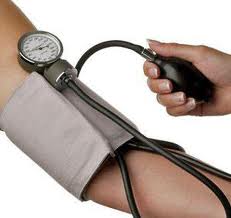Stroke can happen to anyone, even young people. But, who are at the highest risk for stroke? That is the matter we’d like to mention below.
That those who have unmodifiable risk factors include age, gender, race/ethnicity, and stroke family history.
Hypertension
Of all the risk factors that contribute to stroke, the most powerful is hypertension, or high blood pressure. People with hypertension have a risk for stroke that is four to six times higher than the risk for those without hypertension. One-third of the adult U.S. population, about 50 million people (including 40-70 percent of those over age 65) have high blood pressure. Forty to 90 percent of stroke patients have high blood pressure before their stroke event.
Heart disease
After hypertension, the second most powerful risk factor for stroke is heart disease, especially a condition known as atrial fibrillation. Atrial fibrillation is irregular beating of the left atrium, or left upper chamber, of the heart. In people with atrial fibrillation, the left atrium beats up to four times faster than the rest of the heart. This leads to an irregular flow of blood and the occasional formation of blood clots that can leave the heart and travel to the brain, causing a stroke.
Diabetes
Diabetes is another disease that increases a person’s risk for stroke. People with diabetes have three times the risk of stroke compared to people without diabetes. The relative risk of stroke from diabetes is highest in the fifth and sixth decades of life and decreases after that. Like hypertension, the relative risk of stroke from diabetes is highest for men at an earlier age and highest for women at an older age. People with diabetes may also have other contributing risk factors that can amplify the overall risk for stroke. For example, the prevalence of hypertension is 40 percent higher in the diabetic population compared to the general population.
Blood cholesterol levels
Most people know that high cholesterol levels contribute to heart disease. But many don’t realize that a high cholesterol level also contributes to stroke risk.
Cigarette smoking
It is the most powerful modifiable stroke risk factor. Smoking almost doubles a person’s risk for ischemic stroke, independent of other risk factors, and it increases a person’s risk for subarachnoid hemorrhage by up to 3.5 percent. Smoking is directly responsible for a greater percentage of the total number of strokes in young adults than in older adults. Risk factors other than smoking – like hypertension, heart disease, and diabetes – account for more of the total number of strokes in older adults.
Heavy smokers are at greater risk for stroke than light smokers. The relative risk of stroke decreases immediately after quitting smoking, with a major reduction of risk seen after 2 to 4 years. Unfortunately, it may take several decades for a former smoker’s risk to drop to the level of someone who never smoked.
Alcohol Addiction
High alcohol consumption is another modifiable risk factor for stroke. Generally, an increase in alcohol consumption leads to an increase in blood pressure. While scientists agree that heavy drinking is a risk for both hemorrhagic and ischemic stroke, in several research studies daily consumption of smaller amounts of alcohol has been found to provide a protective influence against ischemic stroke, perhaps because alcohol decreases the clotting ability of platelets in the blood. Moderate alcohol consumption may act in the same way as cfmirin to decrease blood clotting and prevent ischemic stroke. Heavy alcohol consumption, though, may seriously deplete platelet numbers and compromise blood clotting and blood viscosity, leading to hemorrhage. In addition, heavy drinking or binge drinking can lead to a rebound effect after the alcohol is purged from the body. The consequences of this rebound effect are that blood viscosity (thickness) and platelet levels skyrocket after heavy drinking, increasing the risk for ischemic stroke.

